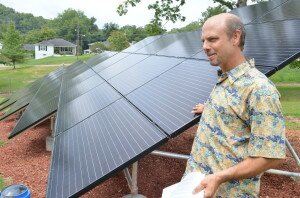New energy – wind, solar and efficiency – is a huge opportunity for eastern Kentucky right now. That is, if our leaders are willing to take advantage of it. Energy will be a hot topic during the Kentucky General Assembly, which is now getting into full swing. That’s especially true in light of a growing need to develop a clean energy plan to comply with the federal Clean Power Plan, released last year. As the Lexington Herald-Leader reports: “Utilities went on a wind and solar building binge in 2015, The Washington Post reports, while stock prices for both industries surged after Congress extended tax credits for renewables in last month’s spending deal. Coal company values, by contrast, have fallen steeply, setting the stage for more bankruptcies and layoffs. Despite a glut of cheap fossil fuels, 60 percent of new investment in power plants is going into renewables, reports the International Energy Agency.” All of this growth in new energy brings jobs with it, too, according to the Herald-Leader: Between 2008 and 2012, more U.S. jobs were created in wind and solar (79,000 direct and indirect) than lost in the coal industry (49,530), according to a Duke University study. We in eastern Kentucky know what it’s been like for the coal industry the last couple of years as the industry has slid into collapse. We know and feel the loss of jobs and economy and community that’s happened as a result. If there is an option for us to build up our clean energy infrastructure in a way...




